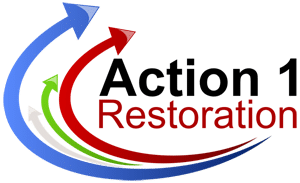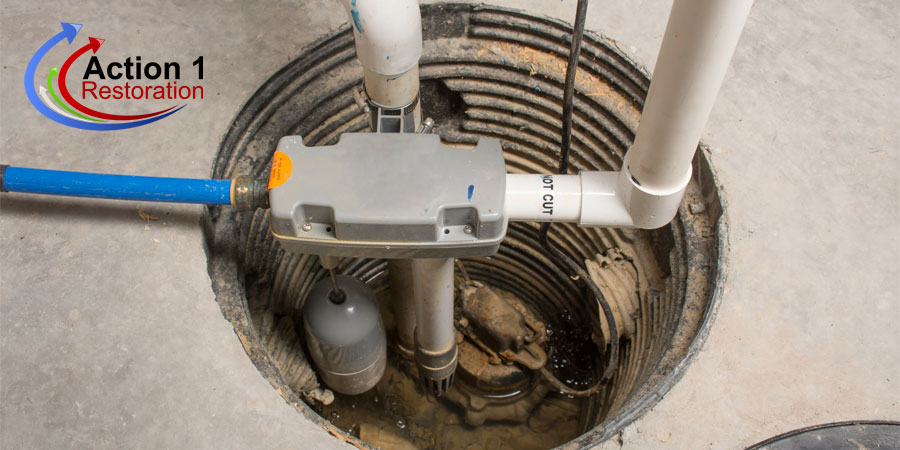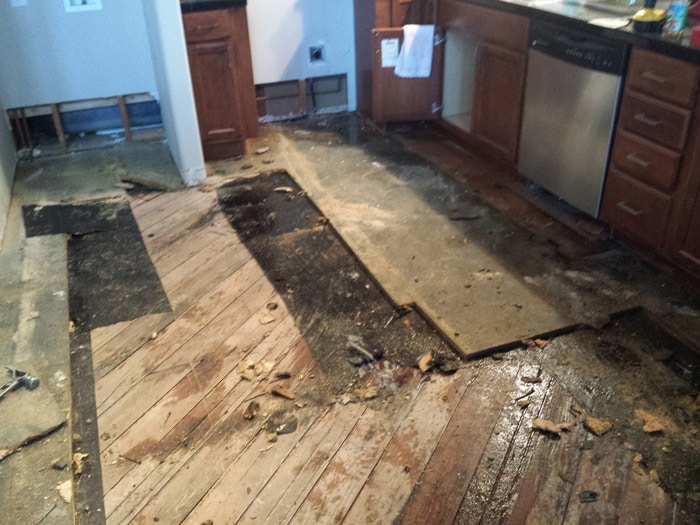Water damage from a burst pipe is one of the most common reasons a home or business sustains water damage. A pipe can burst for several different reasons, but some of the most common are: temperatures dropping below freezing, old rusted pipes, not having a pressure regulator and the pressure is too much for the PVC piping. These are just a few of the main causes of a pipe bursting in your home.
This is the sort of disaster that can ruin an entire day, if not the next few weeks. And the unfortunate thing is that you can’t always tell if a pipe is about to burst. Sometimes you can tell that a pipe is getting a bit rusty and starting to drip. If you notice that a pipe is at risk, then you should take the necessary steps to get the pipe replaced. But what happens if a pipe bursts and you’re simply not prepared for it? That can be a thing that many people never even consider, but knowing what to do can save you a lot of time and money. It is important to understand the steps on how to deal with a burst pipe to minimize any additional damage to your home.
Step 1. Turn Off The Main Water Source – This is difficult if you live in an apartment building or condo, but if you live in a house, it’s only a matter of knowing where the water main is located. And if you don’t know where your water main is, then you should take a few minutes to make sure you do. Knowing where the water main shut off is could help you save thousands of dollars in potential water damage. So the moment you see a burst pipe, shut off the water. The faster you get the water shut off can determine if you can do the work yourself or if you will need to hire a professional company like Action 1.
Step 2. Locate The Broken Pipe – This isn’t always an easy task. If your floor is uneven, for example, water may have traveled quite a distance away from the source of the initial leak. When a pipe breaks or bursts, in most cases, it is behind a wall or in the ceiling. But it is important for our team to locate the break and what caused the pipe to burst in the first place. By determining what caused the pipe to break or burst enables us to be able to fix the problem so we can prevent it from happening again.
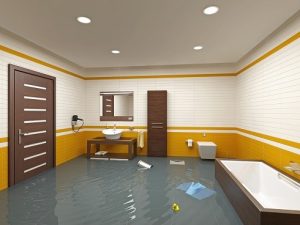
Water Removal From Flooded Bathroom
Step 3. Assess The Amount Of Water Damage – If you’re lucky, you’ll have cut off the water quickly enough that there’s not a great deal of damage. However, even if it doesn’t seem like there’s a great deal of damage, you might want to be careful. Certain kinds of flooring can absorb water much more easily than others. Tile and laminate flooring can have water caught underneath the tiles that needs to be dried properly. And of course, even a little bit of standing water can cause carpet to become entirely destroyed. Water that is not properly removed and dried out can lead to mold, which has been known to cause many different health related issues. If you find that you have a great deal of water damage, along the walls and the floor, you will want to call a water damage repair company like Action 1 Restoration. We will assess the damage for you, remove the water, dry out your home and check for any potential mold issues.
Step 4. Water Removal – If there is not much water that has entered the home, this may be something that you can actually do on your own. Many times this happens when you are not at home and once discovered, there is a lot of water that needs to be removed. If there is a lot of water that needs to be removed, it is best to call a water damage company like Action 1 Restoration for water extraction and removal. If it was a sewage line that broke and has caused sewage to enter the home, this has turned into a biohazard situation and all affected areas will also need to be cleaned and sanitized.
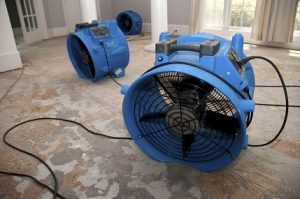
Step 6. Repair & Restoration – Once the water has been removed and the home has been dried out, the repair process can start. Depending on what the water source was will determine what repair and cleanup steps are needed. In most cases you will need to repair or replace the pipes, drywall, baseboards, carpet or laminate floors, furniture and even personal belongings. In severe water damage disasters, part of the structure of your home will also need to be repaired. If the water source was from a sewage line, you will also need to have the damaged areas sanitized and disinfected. Sewage can contain many different harmful contaminants that can make you or your family very sick. You can also check out our water damage restoration process here.
If you follow these 6 steps, then a broken water pipe does not have to be as frustrating or cause as much secondary damage. It is important to follow the correct steps when dealing with a flood from a burst water pipe in your home. If you have sustained a good amount of damage our water damage specialists are available 24 hours a day, 7 days a week. Call Action 1 Restoration at (877) 246-8788 to reach our team of experts today for immediate assistance.
